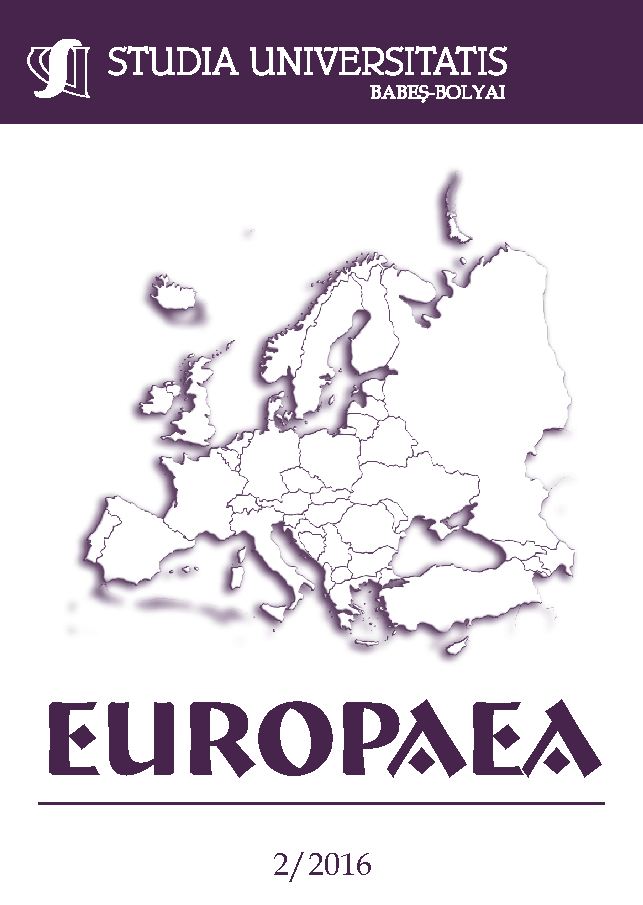THE KRIS/STABOR WITHIN ROMA COMMUNITIES FROM EASTERN AND SOUTHERN ROMANIA. WHAT SOURCES FOR THE LEGITIMACY OF ‟KRISNITORI” AND FOR THE PERPETUATION OF ‟KRIS”? / LE KRIS DANS LES COMMUNAUTES ROM DE SUD-EST DE LA ROUMANIE. QUELLES SONT LES SOURCES POUR LA L
Keywords:
Roma communities, values, Kris, Stabor, norms, legitimacyAbstract
This study aims at presenting and analysing pivotal cultural features and values which structure the Roma court (kris/stabor) in Romania. The main hypothesis of this article is centred on the idea that the Roma court (kris/stabor) functions as both constitutive and regulative normative body within Roma communities, hence ensuring the legitimacy of Roma judges (krisnitori), the survival and the perpetuation of the community itself. The research questions meant to structure this article are: Why do Roma people prefer the Roma court (kris/stabor) and not the national court in Romania? What are the sources for the legitimacy of the Roma court and Roma judges? What are the relations between the Roma court and the activity of the juridical, state apparatus? How is the Roma judgement perpetuated?
References
Acton, Thomas (2005), “Conflict Resolution and Criminal Justice - Sorting out trouble. Can legislation resolve perennial conflicts between Roma/Gypsies/Travellers and ‘National Majorities’?”, in Journal of Legal Pluralism, issue 51, 2005.
Barnes, Alison (2003), “Gypsy Law: Romani Legal Traditions and Culture”, Marquette Law Review, volume 86, Issue 4, review article, pp. 823-844, http://scholarship.law.marquette.edu/mulr/vol86/iss4/6.
Cherata, Lucian (2010), Filosofie, istorie şi tradiţii inedite în cultura rromilor, Craiova : Editura AIUS PrintED.
Fraser, Angus (1995), Tiganii, București : Humanitas, 1995.
Grimard, Léon (2009), « Haine et stigmatisation des Tsiganes: l'antithèse fondamentale », travail remis le 22 décembre 2009, http://www.academia.edu/2321342/Haine_et_stigmatisation_des_Tsiganes._Lantith%C3%A8se_fondamentale.
Hrițcu, Ioana; Sergiu Mișcoiu (2014), « Le Kriss : peut-on parler de pluralisme normatif en Roumanie dans le cas de la minorité rom? », STUDIA UBB. EUROPAEA, LIX, 1, 2014, pp. 243-262.
Kratochwil, Friedrich (1989), Rules, Norms, and Decisions: On the Conditions of Practical and Legal Reasoning in International Relations and Domestic Affairs, Cambridge: Cambridge University Press.
Leeson, Peter T. (2013), “Gypsy law”, Public Choice, 155, pp. 273–292.
Liégeois, Jean-Pierre, « La Kris : Tribunal des ROM », http://www.agirledroit.org/article508.html?lang=fr.
Liga PRO EUROPA, http://www.proeuropa.ro/romi.html.
Matras, Yaron, Roma Culture: An Introduction, Project Education on Roma Children in Europe, disponibil la http://romafacts.uni-graz.at/index.php/culture/introduction/roma-culture-an-introduction.
Marushiakova, Elena; Veselin Popov, The Roma Court in Central, Eastern and South-Eastern Europe, Project Education on Roma Children in Europe, pp. 1-2, disponible à http://romafacts.uni-graz.at/index.php/culture/culture-2/the-roma-court.
Okely, Judith (2007), « La justice des Tsiganes contre la loi des Gadjé », Ethnologie française, 2007/2 (Vol. 37), http://www.cairn.info/zen.php?ID_ARTICLE=ETHN_072_0313.
Projet ROMBASE, http://rombase.uni-graz.at/index.html.
Ruggie, John Gerard (1998), Constructing the World Polity. Essays on International Institutionalization, London, Routledge.
Questin, Marc-Louis (2005), ABC de la magie tsigane, Paris : Edition Grancher.
Downloads
Published
How to Cite
Issue
Section
License
Copyright (c) 2016 Studia Universitatis Babeș-Bolyai Europaea

This work is licensed under a Creative Commons Attribution-NonCommercial-NoDerivatives 4.0 International License.






